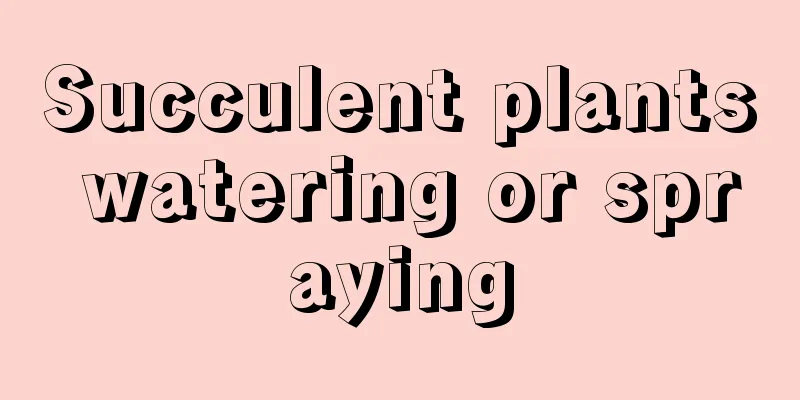What to do if the leaves of Fuchsia turn yellow

Strengthen water managementExcessive watering will cause the soil in the pot to remain wet for a long time, resulting in a lack of oxygen in the soil, causing some fibrous roots to rot, and thus weakening the ability to absorb water and fertilizer. This will cause the young leaves to turn light yellow, and the flower leaves will gradually turn dark yellow. So root rot is one of the reasons why leaves turn yellow. Once you find that the leaves of the plant are turning yellow, you should immediately control watering, stop fertilizing, and loosen the soil frequently to make the potting soil well-ventilated. If the disease is serious, the plant should be removed from the pot and placed in a pile of dry soil to allow water to slowly seep out, and then replanted after the branches and leaves recover. If you water too little, or water only half of the time or miss watering for a long time, the evaporation of water from the leaves will be greater than the absorption, causing a water supply shortage and causing yellowing of the leaves. Once you find that the leaves are shriveled and yellow, move the flowerpot to a cool place immediately, spray some water on the leaves in time, and water them in small amounts. Later, as the stems and leaves gradually regain their uprightness, gradually increase the amount of watering. Control the amount of fertilizerExcessive fertilization, especially excessive nitrogen fertilizer and lack of phosphorus and potassium fertilizer, can easily cause yellowing of leaves, which is mainly manifested in the new leaves being thicker, the leaf surface being uneven, the old leaves gradually falling off, and in severe cases the leaves will gradually dry up at night. Even the whole piece appears burnt yellow. If this happens, stop fertilizing immediately, increase the amount of watering, let the fertilizer flow out from the drainage holes, or immediately overturn the pot, remove some of the old soil, replace it with new soil, and replant the plant. Insufficient fertilization, especially long-term lack of nitrogen fertilizer or failure to change the potting soil, will lead to a lack of nitrogen nutrition in the soil, resulting in weak branches and leaves, and thin and yellow leaves. At this time, it is necessary to overturn the pot in time, remove the plant from the pot, replace it with a larger pot, fill it with new loose soil, and replant it. After watering thoroughly, place it in semi-shade and wait for it to slowly recover before maintaining it normally. Adjust soil pHAlkaline soil: Flowers that prefer acidic soil are planted in the north. Since the soil in most areas of the north contains more salt and alkali, the soil will become alkaline after a period of cultivation, affecting the growth of the plants. You can apply 0.2% ferrous sulfate solution at intervals and 0.1% potassium dihydrogen phosphate solution at the same time to change the pH value of the soil. Reasonable lightingFuchsia is a shade-loving flower. If it is placed in a location exposed to strong sunlight, it will easily cause the leaves and tender buds to turn yellow or even the entire leaves to turn yellow. Once discovered, immediately move the plant to a well-ventilated place for maintenance. But don't provide complete shade, just appropriate shade at noon will be enough. Control humidityHumidity: The weather in the north is dry, and the air is even drier in winter because of the heating in homes. In this environment, it is easy for the tips of the fuchsia leaves to dry out and burn spots to appear on the leaves. The leaves should be sprayed with warm water frequently and the indoor air humidity should be increased. The leaf tips can be humidified by putting a plastic bag on the plant and uncovering it in the morning. Pest and disease controlFuchsia is easily infected by diseases and pests, which can cause a variety of leaf spot diseases, resulting in local necrosis of leaf tissue, the appearance of chlorotic yellow spots or yellow-green patches, or entire leaves turning yellow and falling off. Or if the leaves are damaged by insects and the chlorophyll is destroyed, small yellow-white spots will appear, causing the leaves to fall off. Once pests and diseases are discovered, spray pesticides in time for prevention and control. |
<<: The leaves of Kalanchoe are turning yellow and dry
>>: What to do if the tips of Chunlan leaves dry up
Recommend
Is it better to use a large or small pot for the succulent Jade Butterfly?
Should I use a large or small pot for the succule...
Characteristics of Aloe Vera
1. Appearance characteristics 1. Its roots are fi...
What fertilizer is good for growing coriander?
Fertilizer for growing cilantro Coriander likes p...
How to fertilize Thousand Buddha Hands
one. Spring Equinox to Grain in Ear Period The fe...
Cultivation methods and precautions of chrysanthemum
The thousand-petaled chrysanthemum is relatively ...
How to propagate firecracker flower
Preparation before cutting of firecracker flower ...
Can Podocarpus be hydroponically cultivated?
Can Podocarpus be hydroponically cultivated? Podo...
Grafting methods and time of fruit trees Technical explanation of 5 fruit tree grafting methods
For fruit trees, grafting can not only maintain t...
How to prune bougainvillea after flowering
1. How to prune Its flowers are purple or red and...
Which regions are suitable for growing black peach?
Spade planting conditions The black peach is rela...
Notes on transplanting strawberries: Transplanting time and management methods for strawberry seedlings
Strawberries are sweet and sour and rich in nutri...
Isatis root planting time and method best planting season
Isatis root planting time Isatis root can be plan...
The meaning of jade tree blossoming
1. When to bloom There is a saying that it is dif...
What soil is suitable for tiger bark banyan tree
1. What kind of soil is suitable The requirements...
Effects and functions of Ageratum
The ornamental value of Ageratum The plants of th...









